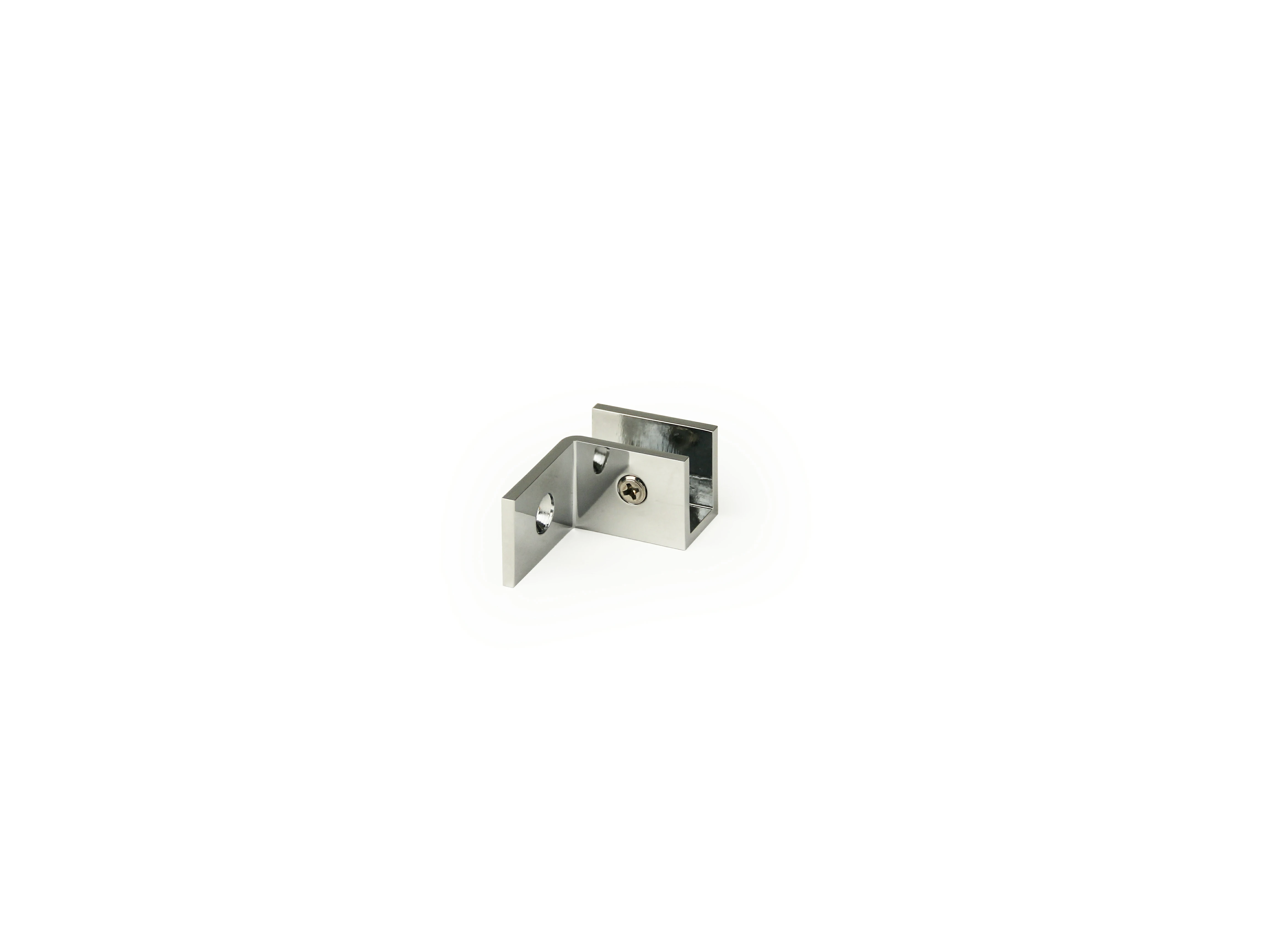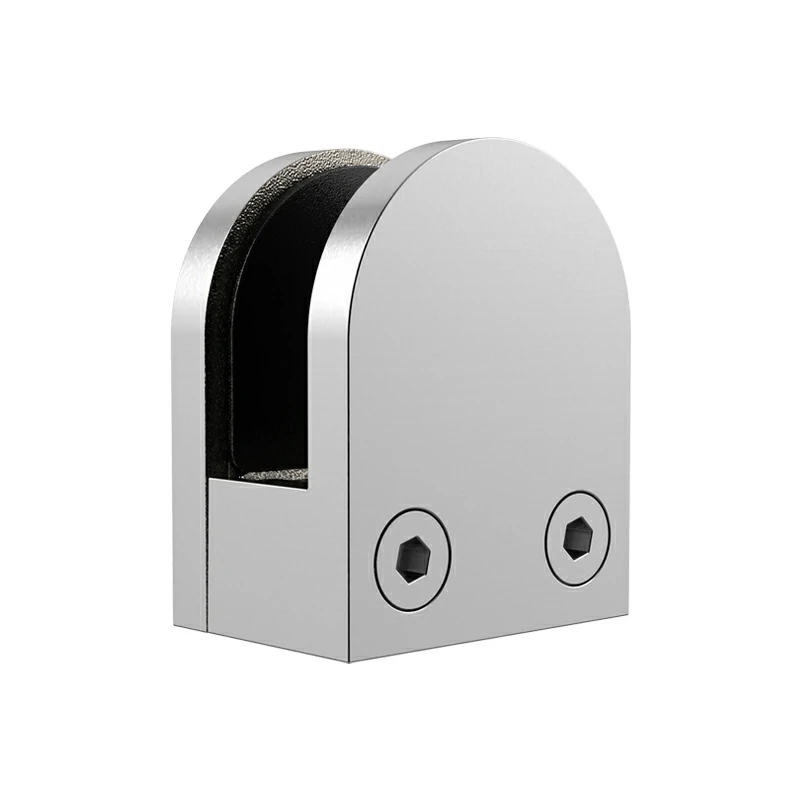In bathroom renovations, glass doors have become the go-to choice for their transparent aesthetics and easy maintenance. Yet the unsung heroes behind their smooth operation and structural integrity are Glass Hinges . While many buyers focus on door thickness and design, they often overlook the critical role of hinges. High-quality Glass Hinges ensure noise-free operation, support glass weight, resist moisture corrosion, and prevent accidental detachment. Conversely, substandard hinges may cause doors to loosen or tilt, creating safety hazards. This article explores the hidden strengths of Glass Hinges through four dimensions: core functions, structural principles, type variations, and purchasing considerations, revealing how this small component safeguards the stability and safety of glass doors.
The bathroom hinge's core mission: More than just opening and closing, it serves as the glass door's safety guardian.

The key difference between Glass Hinges and regular door hinges is that they must handle both the unique challenges of glass (fragile, smooth, and lacking wooden pegs) and the harsh bathroom environment (moisture, extreme temperature fluctuations, and corrosion). Therefore, their core function goes far beyond basic opening and closing, and can be summarized as three missions:
- Stable load-bearing to prevent glass door sagging: Bathroom glass doors typically weigh 10-30kg (depending on size and thickness). The hinges must distribute weight evenly to the door frame through specialized structures, preventing cracks or sagging caused by uneven stress. Premium Glass Hinges can support up to 20-40kg per unit, maintaining stability even with prolonged use without tilting due to fatigue deformation.
- Flexible opening and closing, both smooth and positioned: the glass door should be light and smooth when opening and closing, but also "positioned" at a specific Angle (such as fixed when fully open to avoid collision when automatically closed), and "buffer damping" should be available when closing the door to prevent the glass from hitting the door frame and breaking due to excessive force.
- Corrosion-resistant and rust-proof design, engineered for bathroom's humid conditions: Bathrooms are constantly exposed to high humidity and chemical cleaners like shampoo and shower gel. Poor-quality hinges are prone to rust and jamming. Therefore, Glass Hinges must demonstrate exceptional corrosion resistance to maintain reliable operation over extended use.
Bath Hinge Demystified: Three Core Structures Unveiling the Principle of "Stable Opening and Closing"
The seemingly simple bathroom hinge has a hidden internal structure design, which is mainly composed of three core parts: fixed base, movable arm, glass clamp/connector. Each part works together to achieve the stability and flexibility of the glass door.

1. Fixed base: The hinge's "foundation" and the key to weight-bearing
The fixed base, serving as the "foundation" connecting hinges to door frames, directly determines the hinge's load-bearing capacity. Premium bases are typically made of thickened stainless steel or zinc alloy, securely fastened to walls or door frames using expansion bolts or self-tapping screws. A larger contact area between the base and wall ensures more stable load-bearing performance. High-end hinges may also incorporate internal reinforcement ribs to enhance structural integrity. For example, when glass doors close, the base must withstand impact forces from the door panel. These ribs effectively distribute stress, preventing base cracking.
2. Actuator arm: The hinge's "joint" that controls opening angle and smoothness
The movable arm connects the fixed base with the glass clamp, which is the "joint" to realize the opening and closing of the glass door. Its core lies in the bushing and damping structure:
- Housing (Hinge Shaft): The rotating arm pivots around this housing, whose material and precision determine the hinge's smooth operation. Premium hinges feature brass or stainless steel housings with polished or chrome-plated surfaces, paired with precision ball bearings that generate minimal friction during operation, resulting in nearly silent movement. In contrast, inferior hinges often use iron housings prone to wear and rust, leading to "jerky movements and abnormal noises" after prolonged use.
- Damping Mechanism: To prevent slamming door impacts on glass surfaces, most Glass Hinges incorporate built-in dampers (such as hydraulic or spring systems). When the door reaches its final 10-15° closing angle, these dampers activate, using hydraulic fluid or spring forces to cushion the movement. This gradual closure prevents abrupt impacts—take hydraulic dampers for example, which can control the closing speed to 3-5 seconds. Even when pushed forcefully, the door will still shut smoothly and gently.
3.Shower Clamps: The "bridge" between hinges and glass, ensuring a secure connection

The glass is smooth and hole-free, so it cannot be fixed directly by screws like a wooden door. Therefore, the bathroom hinge is connected to the glass door through a glass clamp or special connector, which is the key structure that distinguishes it from ordinary hinges:
- ShowerClamps come in two types: full-lock and semi-lock designs, secured with screws. The inner edges feature anti-slip rubber pads that enhance grip while preventing scratches or cracks caused by direct metal contact. The ideal clamping force should be moderate—too loose and the glass may shift, too tight and it could shatter. Premium hinge clamps are designed with adjustable mechanisms, allowing precise force control during installation.
- Punched Connection Method: For thicker glass doors (≥8mm), the "punched installation" method is employed—pre-drilling holes in the glass edge and securing the hinge components with bolts and specialized washers. This method ensures stronger connections and enhanced load-bearing capacity, but requires extremely precise drilling. Any deviation exceeding 0.5mm in hole diameter may cause glass cracking.
Common Bathroom Hinge Types: Choosing the Right Opening Method for Different Scenarios
According to the installation form of bathroom glass door (such as swing door, sliding door, folding door) and the use of needs, Glass Hinges are mainly divided into the following types, each with different functions and characteristics:
1.Butt hinges: The most common type, suitable for single or double glass sliding doors
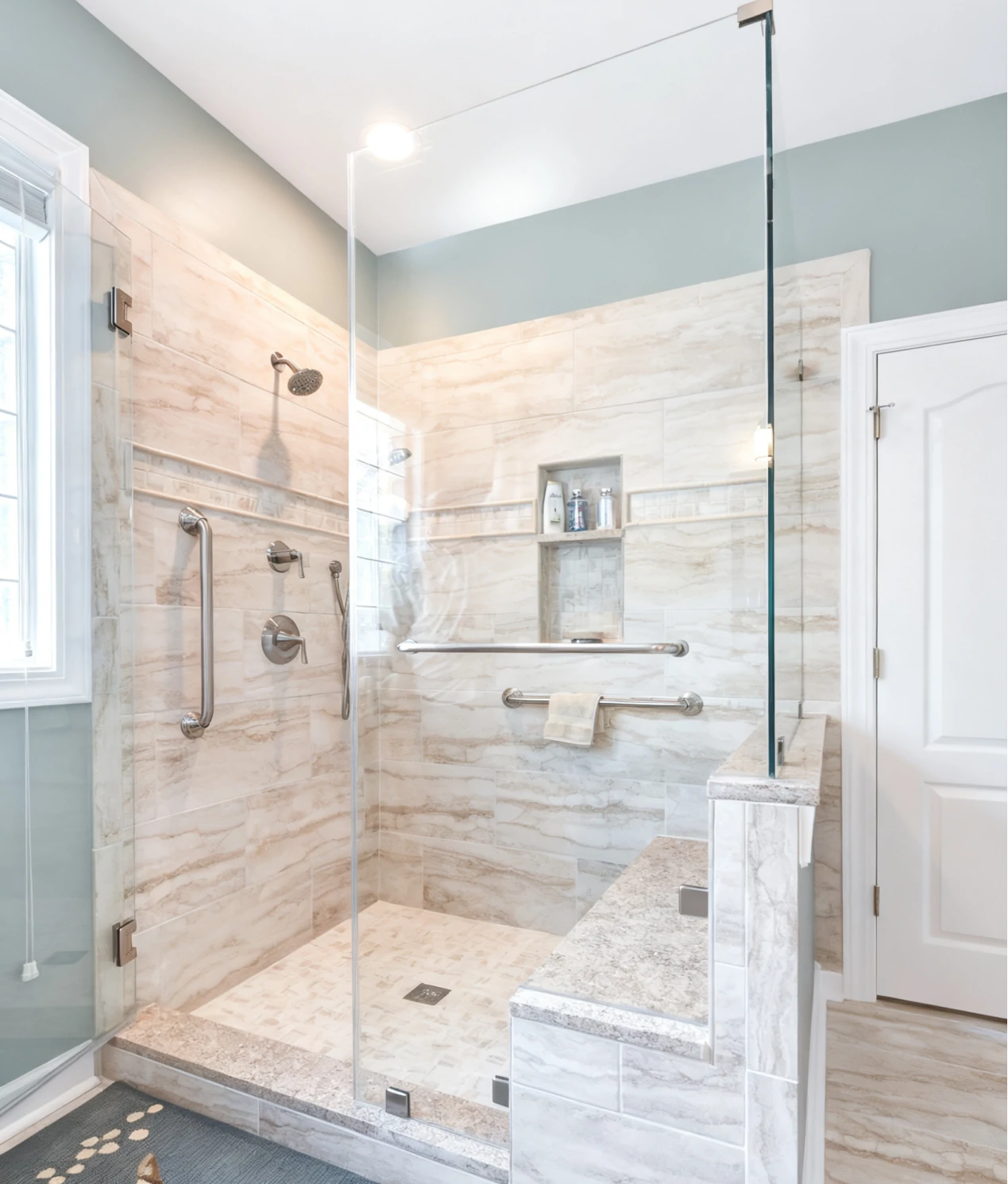
Hinged doors are the most common type in bathrooms, installed on the side of the glass door to rotate the door around the hinge axis (opening and closing angles usually 90°-180°). Depending on the installation position, they are divided into "left open" and "right open", which should be determined in advance according to the bathroom layout.
Key advantages: Simple structure, easy installation, and stable load-bearing capacity make it suitable for most bathroom scenarios (such as shower room hinged doors and bathroom cabinet doors). Some hinged doors also feature a 'two-way opening' function, allowing quick access in emergencies.
2.Track glass hinge: Hidden design for enhance aesthetics and space efficiency
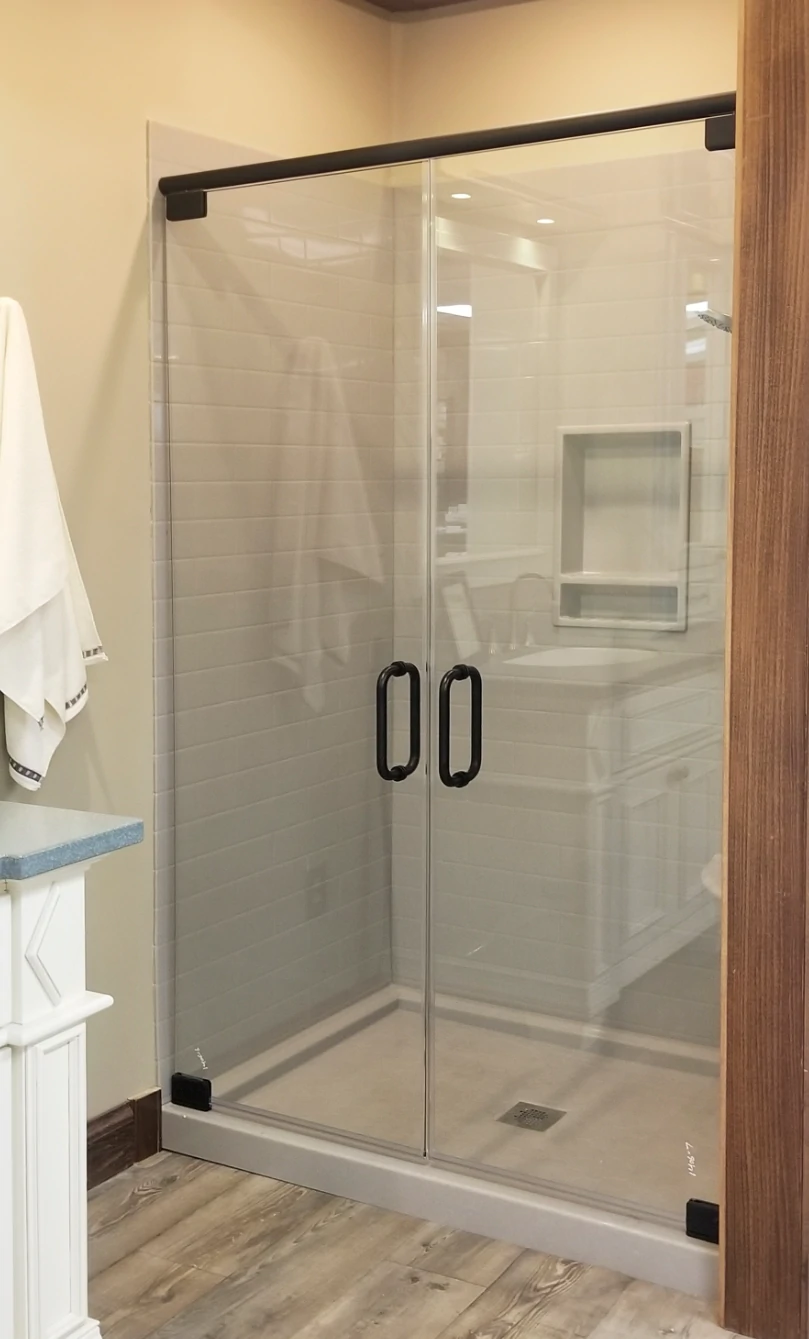
The Track glass hinge installs the fixed base on the top and bottom of the glass door (the corresponding top and bottom rails of the door frame), and the hinge structure is not visible from the outside, which is a "hidden hinge".
Key advantages: The design features clean, minimalist visuals that save space in compact bathrooms or minimalist interiors. With load-bearing components distributed between the top and bottom, precise vertical alignment is crucial during installation to prevent door tilting.
3.Hinged folding doors: Multiple doors operate in sync, saving space when opening

Hinged doors are used for multi-glass folding doors. The hinges connect the multi-glass doors to achieve "folded opening and closing". When opening the door, the door body is folded together to save space.
Advantages: Ideal for wide bathroom entrances (≥1.5m) or high-frequency door usage. The folding door hinges must feature a 'synchronized linkage' function to ensure smooth coordination when opening multiple doors, preventing jamming or misalignment.
4.Sliding Shower Door Systems: Space-Saving Design
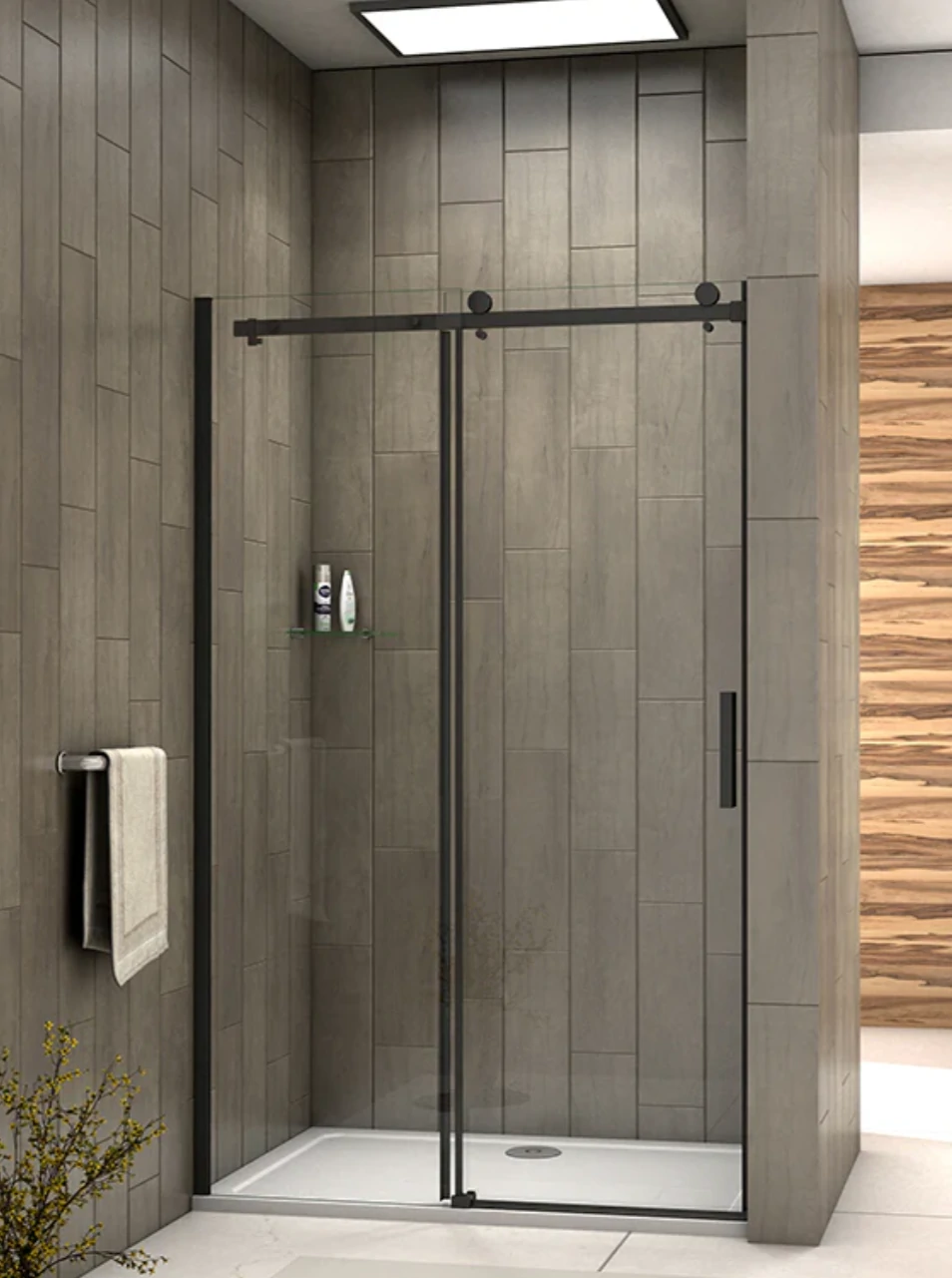
Unlike traditional hinged doors, sliding shower door systems feature a complete assembly comprising “track rails + rollers + positioning components.” The door panel slides horizontally along the track rails for opening and closing.
Key Benefits: When opening, the door slides horizontally along the track without occupying front/back space, making it a “space saver” for compact bathrooms (e.g., shower stalls ≤0.8m wide). Premium sliding systems feature stainless steel or nylon rollers paired with precision bearings for smooth, silent operation. The track incorporates anti-disengagement mechanisms to prevent accidental door detachment, while positioning functionality allows pausing at any point for flexible use.
Selection and Usage: 3 Key Tips to Make Glass Hinges More Durable and Safe
Choosing and using the right Glass Hinges can not only extend the service life of the glass door, but also avoid safety risks. The following three key points need to be paid attention to:
1. Material First: Choose corrosion-resistant and rust-proof materials, and reject "cheap iron hinges"
The bathroom is humid, and the material of the hinge directly determines its service life:
- Preferred 304 stainless steel: 304 stainless steel has excellent corrosion resistance, even long-term contact with water and cleaning agents are not easy to rust, is the "golden material" for Glass Hinges, but the price is relatively high;
- Zinc alloy is a cost-effective choice: The zinc alloy hinges feature chrome-plated or painted surfaces with decent corrosion resistance and moderate pricing. However, their load-bearing capacity is slightly inferior to stainless steel, making them suitable for lightweight glass doors.
- Avoid iron hinges: Iron hinges are cheap, but they are prone to rust, and may be jammed or broken after 3-6 months of use, which is a safety risk. Do not choose them.
2. Installation and calibration: Accurate installation is the prerequisite for stability
Even a 1mm installation error in the bathroom hinge can cause the door to tilt.
- Before installation, ensure that the door frame and wall are vertical and flat. If the wall is not flat, level it first.
- When securing the base, ensure all screws are fully tightened (preferably using expansion screws) to prevent loosening.
- After installation, check whether the door is vertical and smooth to open and close. If there is any tilt or jam, adjust the hinge position in time.
3. Daily maintenance: simple cleaning, prolonging service life
Daily maintenance of Glass Hinges requires no complicated operation, just two things:
- Regularly wipe the hinge surface with a dry cloth to remove water stains and dirt, and avoid the corrosion of the hinge by the residue of cleaning agent;
- Apply 1-2 drops of lubricant (e.g., sewing machine oil) to the hinge bushing every six months to ensure smooth operation, but avoid excessive oil to prevent glass contamination.
Conclusion
Though compact, Glass Hinges are the "soul components" of glass doors – they bear the door's weight, control the rhythm of opening and closing, resist moisture erosion, and silently safeguard the safety and convenience of your bathroom. When selecting glass doors, instead of focusing solely on glass thickness and design, invest more effort in understanding the hinge's material, structure, and type. Choosing the right high-quality hinge can ensure your bathroom glass door remains as smooth as new for a decade of use.
If you encounter any issues with your Glass Hinges (such as rusted or jammed hinges, or tilted glass doors), feel free to leave a comment in the section below. We'll provide tailored solutions to address your concerns!

